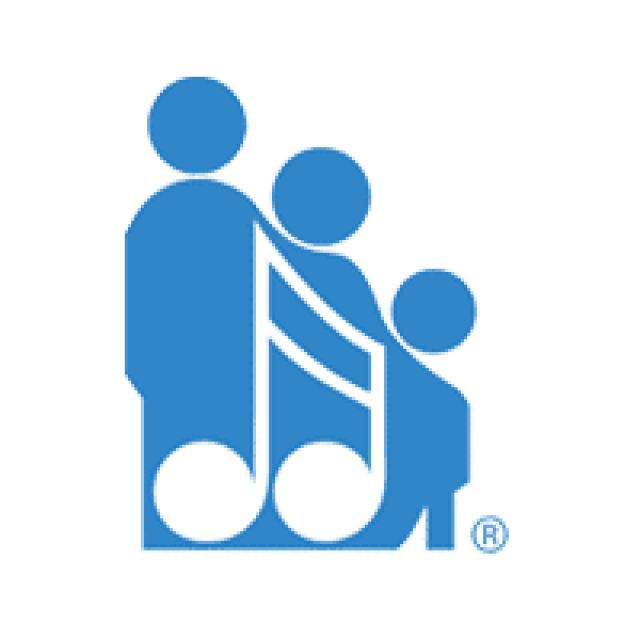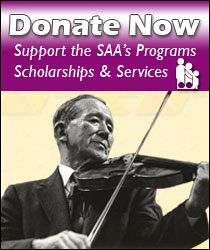By Vanessa Mio and Brenda Brenner
What is Transitional Pedagogy?
As string instructors, we know first-hand that a consistent studio environment creates a sense of comfort, mentorship, and trust between us, our students, and their primary caregivers. Although instructors have the best intentions for their students, comfort/complacency in addition to intrinsic/extrinsic motivation often become factors that affect student success. It is also common for students to make long-term teacher changes because of relocation or simply to gain a new perspective, or short-term teacher changes while studying at a summer festival. During this transitional phase of studying with a new teacher, students often reassess or examine their foundational technique, approach to the instrument, and understanding of vocabulary. This learning curve could also involve acquiring novel practice or performance expectations within a different studio environment.
Throughout any type of transitional period of study, students may experience increased motivation as they approach the instrument and their practice routine in potentially new ways. By contrast, the change to a new teacher could be fraught with motivational, emotional, and physiological challenges as they strive to adapt to new pedagogical approaches (Mio and Brenner 2023; Kennell 2002). Regardless of circumstances, in every stage of study, effective learning is “determined by [an] aptitude for learning a particular task (dependent on prior learning or the traits or characteristics of the learner), [the] ability to understand instruction (verbal ability) and the quality of instruction (the organization and presentation of teaching materials)” (Hallam 1998, 116–117). As instructors clearly conceptualize their pedagogical approach to attend to the individual needs of their long-term or short-term students, this transitional phase of changing teachers could result in positive self-efficacy beliefs, tangible improvements, and artistic freedom (Mio and Brenner 2023; Presland 2005; Weiner 2006).
Self-Efficacy and Motivation within a Nonjudgmental Environment
When studying with a new teacher, students often face the challenges of new performance and practice standards and comparisons with others while adapting to potentially different pedagogical approaches. Such challenges highlight the importance of appropriate lesson/performance expectations and clear communication as students navigate a new environment. First and foremost, when working with a new student, it is essential to maintain respect for the prior or home teacher. Instructors should filter communication through the lens of curiosity as opposed to judgment and show support for fellow colleagues in the field who are forging their own path through the lens of their prior education and experiences.
In a new studio environment, establishing trust between the teacher and student within a nonjudgemental space should be an essential priority. When students trust their new instructor, it creates an environment for experimentation and support throughout the learning process, where students receive feedback while maintaining their sense of self-worth. Mistakes are viewed as information and serve as a springboard for asking questions and increasing self-awareness (Zweig 2008). Within a studio of diverse learners, clarity in communication, lesson expectations, and emotional intelligence contribute to the level of trust that is developed. The teacher connects with each individual student by asking questions and setting goals that are agreed upon, attainable, and appropriate within the given time frame.
Performance Challenges: Unlearning and Relearning
When studying with a new teacher, the learning process can be explained as “unlearning and relearning things,” and “going back to old ways [in performance], but also . . . rewiring” (Mio and Brenner 2023). This statement encapsulates the essence of transitional pedagogy: the natural tendency to revert to prior habits when under pressure, the incremental process of rewiring the muscle and brain pathways, and the resulting frustration that commonly accompanies this transitional phase. During this time, students often become more aware of their technical hindrances, regardless of our best intentions of creating a safe space to experiment and perform. Students frequently compare themselves with their peers and experience varied levels of anxiety when expected to make changes and perform at a high level of artistry (Mio and Brenner 2023). According to Kingsbury (2010), a student’s sense of reality may be challenged when they compare their perceived abilities to their peers or to their own personal expectations.
Although these experiences are not always pleasant, informal performance opportunities could propel a student forward faster because the challenges become apparent when under pressure. As students become more self-aware of the technical/musical challenges that require attention, they can self-actualize in the practice room through metacognitive awareness and strive to internalize the new information in a deliberate, nonjudgmental way (Mio 2019; Prichard 2017). In addition, frequent informal performances could help to assess the rate of progress and allow students to receive valuable feedback from both their instructor and peers. A studio culture that welcomes constructive feedback creates a safe place to practice the delivery and acceptance of various suggestions from others.
Achievable Repertoire Choices
It is important to keep in mind that transfer students may have had different lesson expectations or structure in their prior instruction (e.g., more repertoire focused as opposed to reinforcing a technical foundation or perhaps a large orchestral setting where individual needs are not addressed). As a result, this could lead to varied degrees of physical and emotional challenges. Students may feel discouraged if they perceive their progress to be slow, inferior to their peers, or unsuccessful in performances or other means of assessment (Smith 2005; Weiner 2006). For long-term transfer students, it is our responsibility as instructors to choose accessible repertoire that allows students to be successful both musically and technically while simultaneously trying to internalize changes in their playing. Repertoire that is technically accessible allows students to focus on specific tasks without feeling overwhelmed and approach new pedagogical suggestions in a systematic, scaffolded way to encourage long-term success (Mio and Brenner 2023).
According to Fischer (1997), “The most important thing is to have so much technique that you don’t have to think about it. If you are too conscious of the “how,” it can make playing almost impossible” (vi). In addition, accessible repertoire encourages students to freely express themselves artistically, which has the potential to increase their overall sense of accomplishment. Students thrive on positive reinforcement, whether through feedback, objective recordings, physical release from tension, or just simply ease of playing. Assuring the student that although the piece may appear to be “easy,” they will progress at a quicker pace if they are able to successfully implement the necessary changes in their technique. In addition to Suzuki repertoire, instructors can consider implementing supplemental resources from a wide variety of collections and series, keeping in mind that it is beneficial for students to be unaware of the level of the piece they are learning to disassociate their current development with a prescribed timeline.
Students who are studying with a teacher for a short period of time (e.g., summer festival) may require different pedagogical goals. If for instance the changes are too drastic in a short time frame or the student is exhibiting resistance to change, decisions may be filtered in a different way. Perhaps the goal would be to polish specific sections of their current repertoire or ask for feedback regarding a technical skill of their choosing. In situations such as these, it is best to keep the student and home teachers’ best interest in the forefront of all decisions.
The Variable Nature of Change—It Takes Time!
In a general sense, self-efficacy is associated with the degree to which students believe in their abilities to reach desired goals (Stipek 2002). Providing students with deliberate practice techniques and encouraging self-awareness in the practice room could greatly increase their rate of progress, motivation, and efficiency in a short amount of time. Paul Rolland (1974) claimed, “The teacher’s first task is to offer a vivid idea of what is needed for improvement and to motivate the student, so that [he or she] becomes convinced that changes are necessary” (179). Although this is the goal for every student, it is important to acknowledge that the transitional process requires patience. We live in a society of “quick fixes” where we strive to find solutions to problems and avoid discomfort as much as possible. The reversion to prior habits in both lessons and performances is almost guaranteed for all students working through changes, resulting in varied levels of discouragement. Students need to be reminded on a regular basis of the variable nature of change, incremental progress, and that “unlearning and relearning” is a necessary part of this transitional period. Continuous reinforcement of the process and encouragement will increase students’ self-awareness of their internal dialogue or struggle when facing challenges. It is also helpful to have the support of peers who may share their own experiences and successes throughout their learning journey. Students will then be able to detach themselves from the outcome and see setbacks as part of the process toward their goals, knowing that progress is never linear.
Brian Lewis shared the wisdom of Dorothy DeLay in a personal communication, stating that students will make the necessary changes when they become important to them (Mio 2019). For string instructors, discernment, empathy, and the ability to be agile are essential skills to attend to the individual needs of students on any given day. Teachers should continually assess how students are filtering information: Are they engaged? Are they actively listening? Are they appearing to be discouraged? What is their body language? How are they responding verbally and nonverbally? Do they appear to be motivated by the information? Is there evidence of resistance? This level of attention is essential so that instructors can pivot the focus of the lesson quickly if needed or modify their communication at any given time. In addition, frequent “check-ins” with students provide the emotional space for them to be vulnerable or to clear anything that may be hindering their ability to be fully present in the lesson. Through this established culture of open communication, scaffolded pedagogy, and patience, short-term and long-term transfer students are set up for success. Regardless of time frame, students are encouraged to meet their individual goals while celebrating all achievements throughout the learning journey.
References
Fischer, Simon. 1997. Basics: 300 exercises and practice routines for the violin. London: Edition Peters.
Hallam, Susan. 1998. “The predictors of achievement dropout in instrumental tuition.” Psychology of Music 26 no. 2: 116–132. https://doi
.org/10.1177/0305735698262002
Kennell, Richard. 2002. “Systematic research in studio instruction in music.” In The New Handbook of Research on Music Teaching and Learning, edited by Richard Colwell and Carol Richardson, 243–256. New York: Oxford University Press.
Kingsbury, Henry. 2010. Music, Talent, and Performance: A Conservatory Cultural System. Philadelphia: Temple University Press.
Mio, Vanessa. 2019. “The need for remedial pedagogy in undergraduate violin instruction: A case study of postsecondary instructors’ perceptions.” Update: Applications of Research in Music Education 84 no. 3: 36–45. https://doi.org/10.1177/8755123319826243
Mio, Vanessa and Brenda Brenner. 2023. “Unlearning and relearning: Adolescent students’ perspectives on transitioning to a new teacher and environment.” Update: Applications of Research in Music Education 42 no. 1: 72–80. https://doi.org/10.1177/87551233221095051
Presland, Carole. 2005. “Conservatoire student and instrumental professor: The student perspective on a complex relationship.” British Journal of Music Education 22: 237–248.
https://doi.org/10.1017/S0265051705006558
Rolland, Paul. 1974. The Teaching of Action in String Playing. Van Nuys: Alfred Music Publishing.
Smith, Bret. 2005. “Goal orientation, implicit theory of ability, and collegiate instrumental music practice.” Psychology of Music, 33 no. 1: 36–57. https://doi.org/10.1177/0305735605048013
Stipek, Deborah. 2002. Motivation to Learn: Integrating Theory and Practice (4th ed.). London: Pearson.
Weiner, Bernard. 2006. Social motivation, justice, and the moral emotions: An attributional approach. Mahwah: Lawrence Erlbaum Associates.
Zweig, Mimi. 2008. Mimi Zweig StringPedagogy. [DVD]. Accessed July 10, 2024. https://www.stringpedagogy.com
Register for the Annual General Meeting!
Jul 19, 2024






